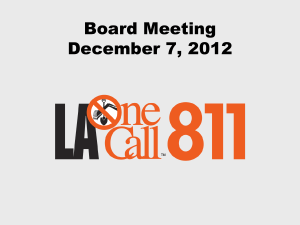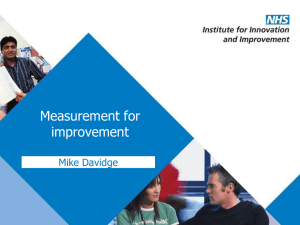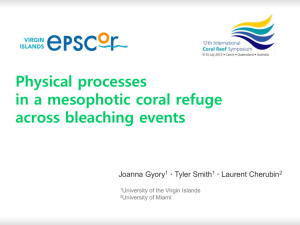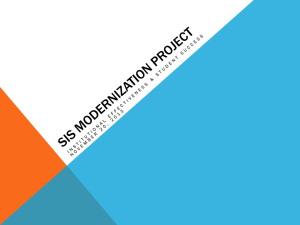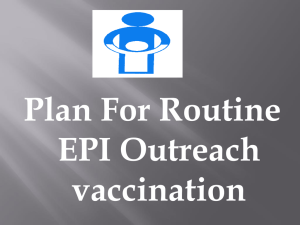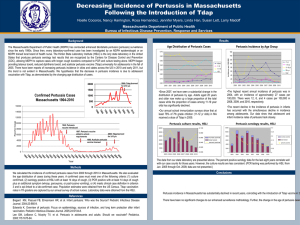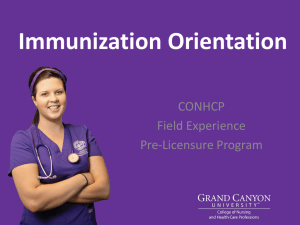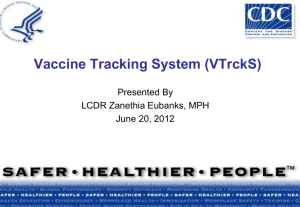Pertussis – the continuing epidemic
advertisement
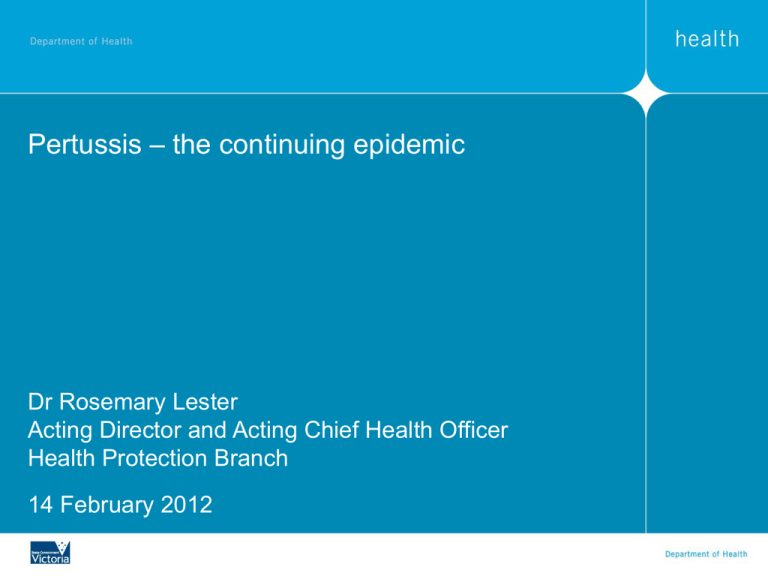
Pertussis – the continuing epidemic Dr Rosemary Lester Acting Director and Acting Chief Health Officer Health Protection Branch 14 February 2012 Outline Rosemary Lester Overview of pertussis The epidemiology of pertussis in Victoria The Government’s response – parental vaccination program Initial uptake – 2010 survey Stacey Rowe Parental Whooping Cough Vaccination Survey • Methodology • How to administer the survey • Questions Overview of pertussis Respiratory illness caused by bacterium Bordetella pertussis Highly infectious – spread by respiratory droplets Incubation period – 6 to 20 days, usually <14 days Infectious period – just prior to onset and, if untreated, for up to 21 days after cough onset Infants <12 months are most at risk of complications and death • Most hospitalised, many ICU admissions • Morbidity – hypoxia and resultant brain damage, seizures lung scarring, broken ribs etc. • Mortality – approx 1 in every 200 cases <6mo will die The continuing epidemic Epidemics observed every 3-5 years Remains endemic in developed countries: • Australia, Canada, Japan, Italy, The Netherlands, Sweden, USA All report recent increases Victoria’s current epidemic • Notifications increased markedly since 2008 • 8,489 cases notified in 2011 alone; nearly 8-times greater than the 2007 annual total Jan Feb Mar Apr May Jun Jul Aug Sep Oct Nov Dec Jan Feb Mar Apr May Jun Jul Aug Sep Oct Nov Dec Jan Feb Mar Apr May Jun Jul Aug Sep Oct Nov Dec Jan Feb Mar Apr May Jun Jul Aug Sep Oct Nov Dec Jan Feb Mar Apr May Jun Jul Aug Sep Oct Nov Dec Number of notified cases Notified cases 2007 to 2011 Notified cases of pertussis by month and year of notification, 2007-2011, Victoria 1200 1000 800 600 400 200 0 2007 2008 2009 Year and month of notification 2010 2011 The continuing epidemic: infants aged < 12 months Whilst the vast majority of cases are among adults, infants aged less than12 months are most vulnerable In five years (2007 – 2011), 634 cases of pertussis were notified in children <12 months of age Of these, 477 (75%) were aged <6 months • no immunity until received 3 doses of pertussis – containing vaccine at 2, 4, and 6 months of age Notified cases 2007 to 2011 (<12 and <6 months) 40 Notified cases of pertussis in children aged less than 12 months, by month and year of notification, 2007 to 2011, Victoria 35 < 6 months 6-11 months 25 20 15 10 5 0 Jan Feb Mar Apr May Jun Jul Aug Sep Oct Nov Dec Jan Feb Mar Apr May Jun Jul Aug Sep Oct Nov Dec Jan Feb Mar Apr May Jun Jul Aug Sep Oct Nov Dec Jan Feb Mar Apr May Jun Jul Aug Sep Oct Nov Dec Jan Feb Mar Apr May Jun Jul Aug Sep Oct Nov Dec Number of notified cases 30 2007 2008 2009 Month and year of notification 2010 2011 Pertussis-containing vaccination coverage DTPa coverage by quarter and childhood age cohort, Victoria, March 2007 to December 2011 100 95.22 95 92.05 90 12-15 months 24-27 months 85 60-63 months 80 Date of calculation Dec-11 Sep-11 Jun-11 Mar-11 Dec-10 Sep-10 Jun-10 Mar-10 Dec 09 Sep 09 Jun 09 Mar 09 Dec 08 Sep 08 Jun 08 Mar 08 Dec 07 Sep 07 Jun 07 75 Mar 07 Per cent coverage 93.53 The Government’s response 15 June 2009 - Parental whooping cough vaccination program • Free pertussis-containing vaccine (Boostrix®) • Parents of new babies eligible (incl. adoptive/foster) • Time-limited program Program rationale – to protect unimmunised babies from infection with pertussis by vaccinating parents – referred to as “cocooning strategy” Delivery of vaccine is being encouraged through: • Maternity hospitals • General practice • MCH nurses • Local Government immunisation 2010 survey Attitudes, awareness, uptake survey • Smaller sample of parents whose babies were born in Q1 2010 • 10 LGAs – 5 rural, 5 metro • Mail-out survey direct to parents Results • 166 families participated from 9 LGAs • 69% mothers and 53% fathers had had the vaccine • Reasons for not being vaccinated: • Not being aware of the availability of the free vaccine • Time and effort involved to be vaccinated Limitations • Poor response rate – 41% • Logistical challenges – Sampling and distribution Next steps Nationally • Vaccine effectiveness studies • Various laboratory research going on – to examine molecular characteristics of Bordetella Pertussis • ? Additional booster in second year of life • Repeat survey to measure uptake of vaccine (Vic) – Stacey… Parental whooping cough vaccination survey Stacey Rowe Senior Epidemiologist Communicable Diseases Prevention and Control Unit 14 February 2012 Survey Aim and Methodology Aim To obtain a coverage estimate on the parental whooping cough vaccination Methodology State-wide distribution Four consecutive weeks – 15 February to 14 March, inclusive Parents attending 4 month Key Ages and Stages consultation MCH nurse administered The survey • Short: focuses on whether, where and when • No personal identifying information being collected • Not onerous for either MCH nurses/parents Distribution of survey and related materials Distribution Sent from our warehouse to all MCH coordinators on Friday 3 February Most of you will have received it already What will you receive? 1. The survey (1 pager) – 1 for each child expected to attend 4 month KAS consultation 2. Plain Language Statement (1 pager) – 1 for each parent(s) 3. Information sheet (1 pager, double-sided) – 1 for each MCH Office 4. Reply-paid envelopes – At least 1 per 20 surveys The survey How to administer survey How to administer survey Who can participate? • Birth, foster and adoptive parents • One parent can respond for both – complete two columns • Single parent – complete one column Informed consent Explain to parents: • What the survey is about • Why it’s being conducted • What their participation will involve Provide parents with Plain Language Statement Request their consent – tick box on front of survey Consent + initial questions Vaccinated: Whether, where, when, + why not Frequently asked questions Some explanation about the questions Question 4 – Have you had the whooping cough vaccine in relation to the birth of your most recent child? • Why “in relation to”? It excludes those who may have already had the vaccine for other reasons (captured elsewhere): – Previous child, or newborn relative – Vaccinated in year 10 at school It helps narrow the subsequent question of “when” Question 4b – What date did you have the vaccine? • Ideally – obtain actual date (dd,mm,yyyy) • Otherwise, use approximations (check boxes) Frequently asked questions (cont.) Question 4c – If you did not have the vaccine, why not? • Already had the vaccine since 2004 – Boostrix only became available in 2004 – People who have had vaccine since 2004 don’t need it again • Did not know the free vaccine was available • Other (use back of survey if need more room) – – – – – – – – Not being aware of the risks of the disease Don’t consider the disease serious enough to be vaccinated Costs associated with going to the doctor Time and effort involved with getting vaccinated Potential side effects of the vaccine Concerns regarding how well the vaccine works Don’t like needles My religious beliefs Demographics Other considerations Parents need not feel that they are being criticised for not having received the whooping cough vaccination You may wish to use this conversation with parent(s) opportunistically, and link unvaccinated parents in to your immunisation providers to encourage vaccination Survey returns Return of surveys to Department of Health • End of survey period – 15 March 2012 • Intermittently throughout survey period (large caseloads) • Reply-paid envelopes (call 1300 651 160 if requiring more) Questions? • Stacey Rowe – 1300 651 160 • stacey.rowe@health.vic.gov.au Distribution of results Survey results reported to: • MCH workforce • LGA immunisation committees • Chief Health Officer • DEECD • National communicable disease networks
